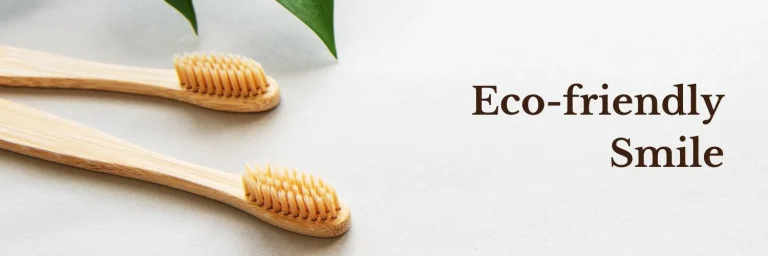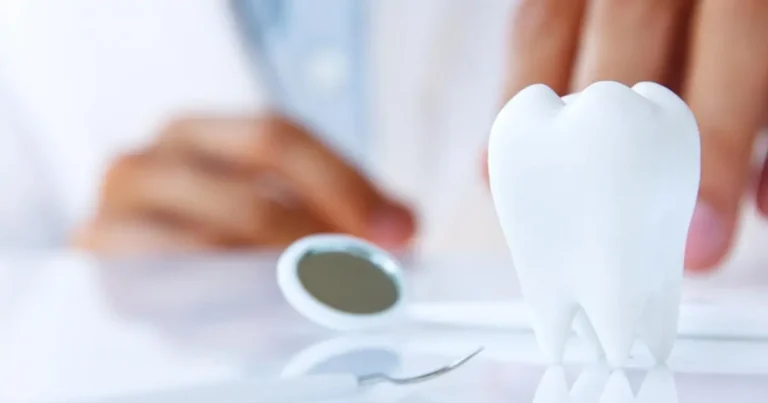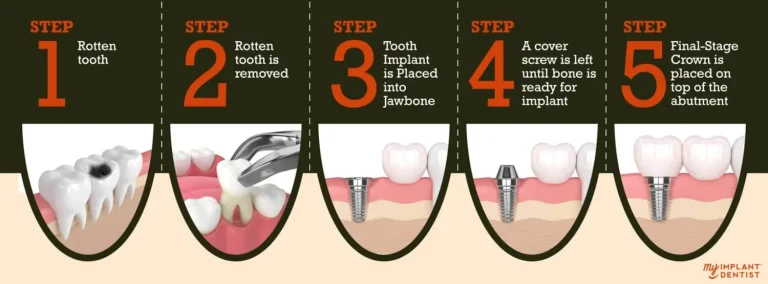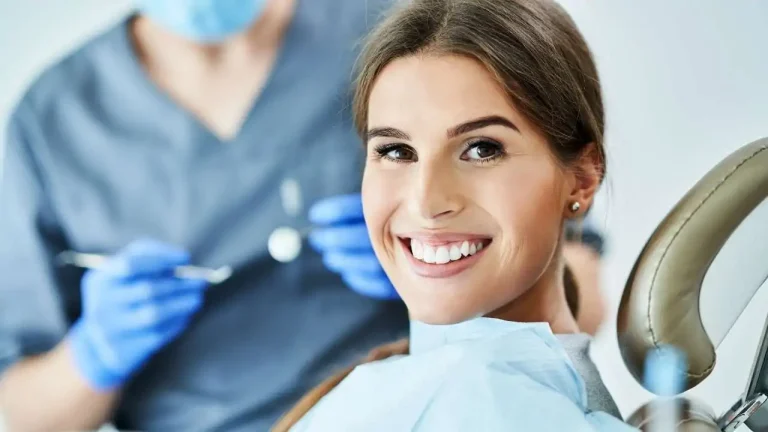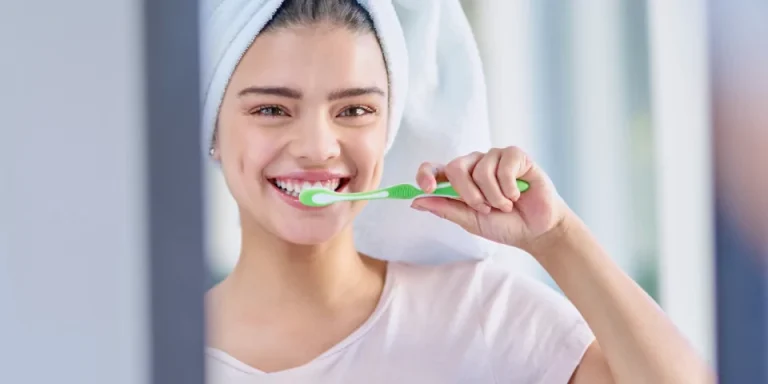The Truth About Fluoride-Free Toothpaste: Benefits and Risks
Fluoride-free toothpaste—ever heard of it? If you’ve browsed the dental care aisle recently, you’ve probably noticed an increasing number of products proudly labeled as “fluoride-free.” It’s no coincidence. As more people embrace natural and chemical-free lifestyles, fluoride-free toothpaste has surged in popularity. But what’s all the fuss about? Is it just another trend, or is there more to the story?
For decades, fluoride has been the go-to ingredient in toothpaste for preventing cavities and strengthening enamel. However, growing concerns about potential health risks and a desire for more natural alternatives have led many to reconsider its use. At the same time, brands are stepping up to meet this demand by offering innovative fluoride-free options packed with natural ingredients.
In this article, we’ll uncover the truth about fluoride-free toothpaste—the benefits, the risks, and everything in between. Whether you’re curious about making the switch or just want to know what’s behind this growing trend, we’ve got you covered. Let’s dive in!
Reasons for the Growing Demand for Fluoride-Free Options
In recent years, there’s been a noticeable shift in consumer preferences when it comes to dental care products, particularly toothpaste. More and more people are reaching for fluoride-free options, and you might be wondering why. Well, let’s dive into some of the key reasons behind this growing demand.
1. Increased Awareness of Ingredients
One of the most significant factors driving the popularity of fluoride-free toothpaste is the rising awareness among consumers about what goes into their products. With information at our fingertips thanks to the internet, people are becoming more educated about the ingredients in their personal care items. Many are scrutinizing labels and seeking out products that align with their health values. This newfound knowledge often leads to questions about fluoride, a common ingredient in traditional toothpaste, and its potential effects on overall health.
2. The Natural Products Movement
There’s no denying that the natural products movement is in full swing. From organic foods to chemical-free skincare, consumers are increasingly gravitating towards products that boast natural ingredients. Fluoride-free toothpaste fits right into this trend, appealing to those who prefer to avoid synthetic chemicals in their daily routines. For many, using a toothpaste made from natural ingredients feels like a healthier choice—one that aligns with a holistic lifestyle.
3. Concerns About Fluoride Safety
While fluoride has long been praised for its cavity-fighting properties, it’s also faced scrutiny over potential health risks. Some studies have raised concerns about fluoride exposure leading to issues like dental fluorosis or even more serious health problems when consumed in excess. As a result, many consumers are opting to play it safe by choosing fluoride-free alternatives, especially parents who are cautious about their children’s dental health.
4. Influence of Social Media and Peer Recommendations
Let’s face it: social media has a powerful influence on our purchasing decisions. Platforms like Instagram and TikTok are filled with influencers promoting natural living and wellness trends, including fluoride-free toothpaste. When you see your favorite influencer sharing their love for a particular brand or product, it can spark curiosity and encourage others to try it out too. Peer recommendations carry weight, and as more people share their positive experiences with fluoride-free options, the demand continues to grow.
The shift towards fluoride-free toothpaste is fueled by a combination of increased ingredient awareness, the allure of natural products, safety concerns regarding fluoride, and the influence of social media. As consumers become more conscious about what they put in their bodies and how it affects their health, it’s no surprise that they’re seeking out alternatives that align with their values. So, if you’ve been contemplating making the switch to fluoride-free toothpaste, you’re certainly not alone!
Natural Ingredients Commonly Used in Fluoride-Free Toothpastes
As the demand for fluoride-free toothpaste continues to rise, many brands are stepping up to the plate with innovative formulations that utilize a variety of natural ingredients. If you’re curious about what’s actually in these fluoride-free options, let’s take a closer look at some of the most popular ingredients and their benefits.
1. Nano Hydroxyapatite
One of the standout ingredients in many fluoride-free toothpastes is nano hydroxyapatite (n-HAp). This naturally occurring mineral is a key component of our teeth and bones, making it an excellent choice for remineralization. Studies have shown that n-HAp can effectively help repair early stages of tooth decay by filling in microscopic holes and strengthening enamel. So, if you’re looking for a fluoride alternative that supports your teeth’s health, this ingredient might just be your best bet.
2. Xylitol
You might have heard of xylitol as a sugar substitute, but did you know it’s also a fantastic ingredient for oral care? Xylitol is a natural sweetener derived from plants that can actually inhibit the growth of cavity-causing bacteria. By reducing the levels of harmful bacteria in your mouth, xylitol helps maintain a healthier oral environment. Plus, it adds a pleasant sweetness to toothpaste without the negative effects of sugar—talk about a win-win!
3. Tea Tree Oil
Tea tree oil is another popular ingredient found in many fluoride-free toothpastes, and for good reason. Known for its antibacterial properties, tea tree oil can help combat plaque and promote overall oral hygiene. It’s particularly beneficial for those dealing with gum issues or bad breath. Just imagine brushing your teeth with a toothpaste that not only cleans but also leaves your mouth feeling fresh and invigorated!
4. Baking Soda
Baking soda isn’t just for baking; it’s also a powerhouse when it comes to oral care! This natural abrasive helps remove surface stains and whiten teeth while neutralizing acids in the mouth. Many fluoride-free toothpastes incorporate baking soda for its gentle yet effective cleaning properties. If you’re looking to brighten your smile without harsh chemicals, toothpaste with baking soda might be right up your alley.
5. Essential Oils
Essential oils like peppermint, spearmint, and clove are often used in fluoride-free toothpastes not only for their delightful flavors but also for their therapeutic benefits. These oils can provide antimicrobial properties that help fight bacteria and freshen breath. Plus, who doesn’t love that minty fresh feeling after brushing?
In Summary
The world of fluoride-free toothpaste is rich with natural ingredients that offer various benefits for oral health. From nano hydroxyapatite’s enamel-strengthening properties to xylitol’s cavity-fighting capabilities, these alternatives provide effective options for those looking to avoid fluoride. So next time you’re perusing the toothpaste aisle, keep an eye out for these powerful natural ingredients—they might just make your dental care routine feel a little more wholesome!
Effectiveness of Fluoride-Free Toothpastes in Cavity Prevention
When it comes to oral care, one of the most pressing questions on everyone’s mind is: “Do fluoride-free toothpastes really work?” With fluoride being the gold standard for cavity prevention for decades, it’s only natural to wonder how these alternatives stack up. Let’s explore the effectiveness of fluoride-free toothpastes and what research has to say about their ability to keep cavities at bay.
1. Understanding Cavity Formation
Before diving into the effectiveness of fluoride-free options, it’s essential to understand how cavities form. Cavities develop when bacteria in the mouth produce acids that erode tooth enamel. Fluoride works by reinforcing enamel and making it more resistant to these acids. So, can fluoride-free toothpastes provide similar protection?
2. Research and Studies
A growing body of research is beginning to shed light on the effectiveness of fluoride-free toothpastes. Some studies suggest that certain natural ingredients, like nano hydroxyapatite and xylitol, can effectively reduce cavity risk. For example, a study published in the Journal of Dentistry found that toothpaste containing nano hydroxyapatite was comparable to fluoride toothpaste in remineralizing early carious lesions. This is promising news for those opting for fluoride-free options!
3. User Experiences
Many individuals who have switched to fluoride-free toothpaste report positive experiences regarding their oral health. For instance, some users claim they’ve noticed less sensitivity and healthier gums after making the switch. Anecdotal evidence suggests that while fluoride-free toothpastes may not offer the same level of protection as traditional options, they can still be effective when combined with good oral hygiene practices.
4. The Importance of Regular Dental Visits
While using fluoride-free toothpaste can be part of a healthy oral care routine, it’s crucial to remember that no toothpaste can replace regular dental check-ups. Dentists play a vital role in monitoring your oral health and providing professional cleanings that help prevent cavities. If you’re considering switching to a fluoride-free option, consult with your dentist about your specific needs and how to maintain optimal oral health.
5. Personalization Matters
Ultimately, the effectiveness of any toothpaste—fluoride or fluoride-free—depends on individual factors such as diet, oral hygiene habits, and personal health history. What works for one person may not work for another. It’s essential to find a product that aligns with your preferences while also addressing your unique dental needs.
In Summary
While fluoride has long been hailed as a cavity-fighting hero, many fluoride-free toothpastes are proving effective thanks to innovative natural ingredients like nano hydroxyapatite and xylitol. Research and user experiences suggest that these alternatives can help maintain oral health when paired with diligent brushing and regular dental visits. So if you’re contemplating making the switch, rest assured there are options out there that can support your smile!
Potential Risks of Not Using Fluoride in Oral Care
As the trend toward fluoride-free toothpaste gains momentum, it’s essential to consider the potential risks associated with forgoing fluoride altogether. While many people are drawn to natural products for various reasons, understanding the implications of skipping fluoride can help you make an informed decision about your oral care routine. Let’s explore some of the potential drawbacks of not using fluoride.
1. Increased Risk of Cavities
One of the most significant concerns about not using fluoride is the increased risk of cavities. Fluoride is known for its ability to strengthen tooth enamel and make it more resistant to acid attacks from bacteria. Without this protective layer, your teeth might become more vulnerable to decay, especially if you have a diet high in sugars and acids. If you’re someone who enjoys sugary snacks or drinks, skipping fluoride could put you at a higher risk for cavities.
2. Dental Fluorosis Misconceptions
Many people avoid fluoride due to fears about dental fluorosis, a condition caused by excessive fluoride exposure during childhood, leading to discoloration of the teeth. However, it’s important to note that dental fluorosis is primarily a concern for children under the age of six, who are more susceptible to its effects. For adults and older children, using fluoride responsibly—such as through toothpaste and professional treatments—can provide significant benefits without the risks associated with overexposure.
3. The Role of Professional Dental Care
When opting for fluoride-free products, it’s crucial to maintain regular dental visits. Dentists can provide fluoride treatments that offer a concentrated dose of this mineral directly to your teeth, helping to mitigate the risks associated with not using fluoride toothpaste at home. If you decide to go fluoride-free, discuss your oral health strategy with your dentist to ensure you’re taking the necessary steps to protect your teeth.
4. Individual Health Considerations
Everyone’s dental health is unique, and factors such as age, genetics, and existing dental conditions can influence how well your teeth respond to different care products. For example, individuals with a history of cavities or those who are prone to tooth decay may benefit significantly from fluoride use. If you have specific concerns about your oral health or a family history of dental issues, it might be worth reconsidering a fluoride-free approach.
5. Finding a Balance
If you’re leaning towards a fluoride-free lifestyle but still want to protect your teeth effectively, consider finding a balance. You don’t necessarily have to eliminate fluoride entirely; instead, you might choose to use fluoride toothpaste occasionally while incorporating fluoride-free options into your routine. This way, you can enjoy the benefits of both worlds while minimizing potential risks.
In Summary
While there are many appealing reasons to choose fluoride-free toothpaste—such as natural ingredients and personal health beliefs—it’s essential to weigh these benefits against the potential risks of increased cavity formation and other dental issues. By staying informed and consulting with your dentist, you can create an oral care routine that aligns with your values while still prioritizing your dental health. Remember, making choices that work for you is what matters most!
Conclusion
Navigating the world of dental care can feel overwhelming, especially with the growing options for fluoride-free toothpaste. As we’ve explored, there are compelling reasons behind the increasing demand for these alternatives, from a desire for natural ingredients to concerns about fluoride’s safety. While many fluoride-free toothpastes incorporate effective natural components like nano hydroxyapatite and xylitol, it’s crucial to recognize the potential risks associated with not using fluoride, particularly regarding cavity prevention.
Ultimately, the decision to use fluoride or opt for a fluoride-free product is a personal one that should be informed by individual health needs, preferences, and lifestyle choices. Regular dental check-ups remain essential, regardless of your toothpaste choice, as they provide professional insights and treatments that can help maintain your oral health.
So, whether you’re considering making the switch to fluoride-free toothpaste or sticking with traditional options, the key is to stay informed and proactive about your dental care. Your smile deserves the best, and by understanding both sides of the fluoride debate, you can make choices that keep your teeth healthy and happy for years to come!
FAQs
1. What is fluoride-free toothpaste?
Fluoride-free toothpaste is a dental hygiene product that excludes fluoride, the traditional active ingredient for cavity prevention. It often uses natural alternatives.
2. Why are more people using fluoride-free toothpaste?
Increased awareness of ingredients, the natural products movement, concerns about fluoride safety, and social media influence are driving the demand.
3. What are some common natural ingredients in fluoride-free toothpaste?
Common ingredients include nano hydroxyapatite, xylitol, tea tree oil, baking soda, and essential oils.
4. How does nano hydroxyapatite (n-HAp) benefit teeth?
N-HAp is a mineral that helps remineralize teeth, repairing early decay and strengthening enamel.
5. How does Xylitol help prevent cavities?
Xylitol inhibits the growth of cavity-causing bacteria in the mouth.
6. Is fluoride-free toothpaste effective at preventing cavities?
Some studies suggest that certain fluoride-free toothpastes, particularly those with n-HAp and xylitol, can be effective in reducing cavity risk, especially when combined with good oral hygiene.
7. What are the risks of not using fluoride toothpaste?
The primary risk is an increased chance of developing cavities, as fluoride strengthens tooth enamel.
8. Is dental fluorosis a concern with fluoride toothpaste?
Dental fluorosis is mainly a concern for children under six due to overexposure. Adults and older children can generally use fluoride toothpaste safely.
9. Should I visit the dentist if I use fluoride-free toothpaste?
Yes, regular dental visits are crucial for monitoring oral health and receiving professional cleanings, regardless of your toothpaste choice.
10. How do I decide if fluoride-free toothpaste is right for me?
Consider your individual dental health needs, preferences, and lifestyle. Consult your dentist to determine the best option for maintaining your oral health.


